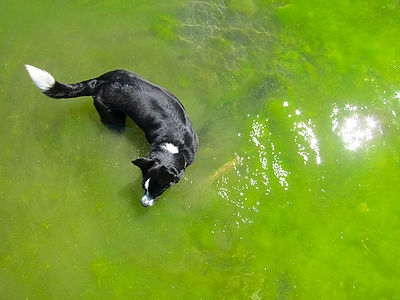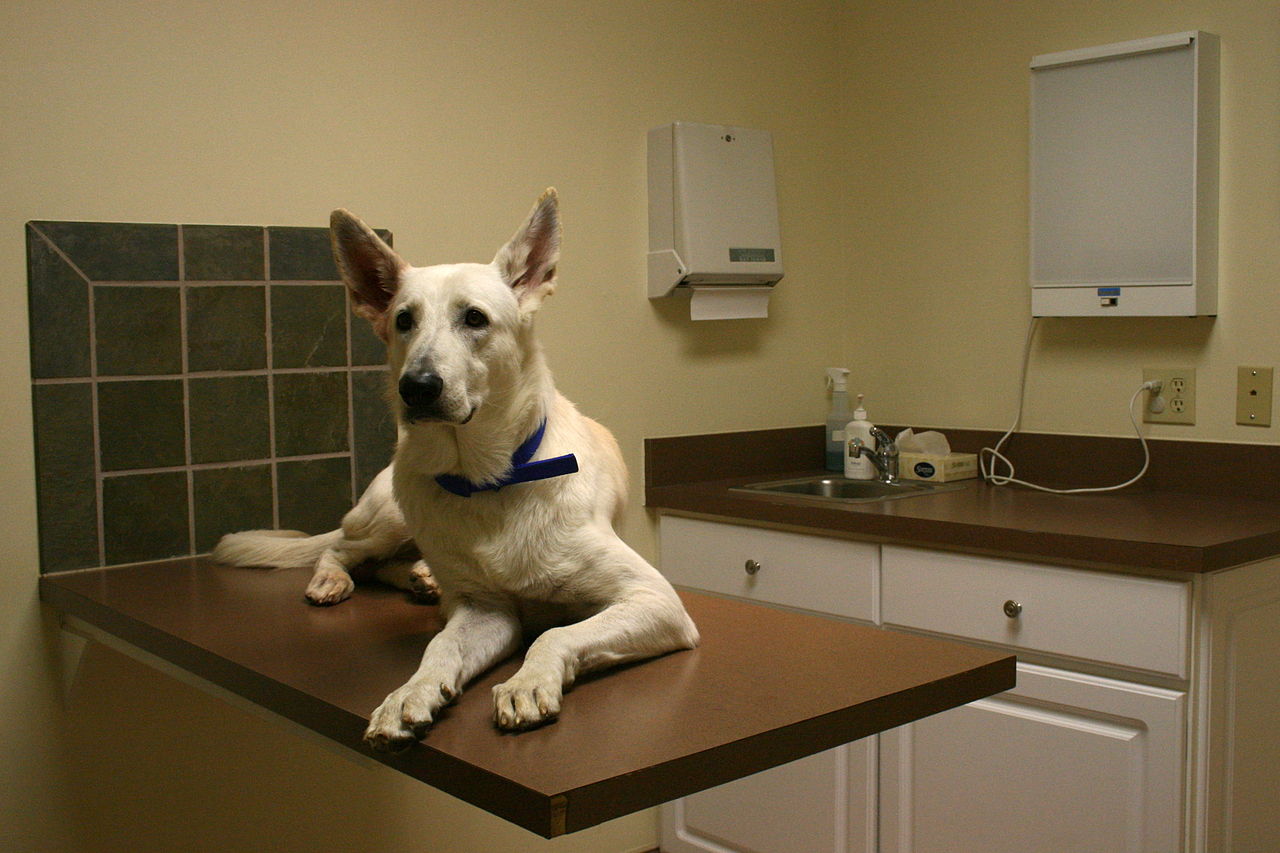
Our pets enjoy the great outdoors just as we do. But if you go hiking, camping, anywhere near water – ponds, freshwater lakes, streams, rivers and such – there can be a danger hiding. Blue-green algae can be present.
Blue-green algae (known also as Cyanobacteria, algal, microcystis, cyanotoxin, anatoxin) produce microscopic bacteria which are poisonous to cats, dogs, horses, livestock, birds and humans.
Denise Keehner, director of the Environmental Protection Agency (EPA) Office of Wetlands, Oceans and Watersheds in Washington, D.C. says that the algae are a result of many sources including nutrient-rich waters, fertilizers, pet and livestock waste, faulty septic systems and sewage treatment plants.
The “blooms” float on the water and give it a blue-green appearance, similar to pea soup or paint. The algae often accumulate close to shore which gives pets, livestock and people easy access to them.
Although they live in water all year, the algae are more abundant during hot weather when we are all more likely to be out and about with our pets.
Not all of the blue-green algae produce toxins, but all of them should be treated as though they are toxic. It takes only a couple of mouthfuls of contaminated water to result in a fatal poisoning.
The algae can damage the liver and nervous system, cause inflammation of the respiratory tract, irritate eyes, nose, throat and skin. Some signs to look for are vomiting, diarrhea, black, tarry or bloody stools, excessive drooling, pale mucous membranes, jaundice, seizures, shock, blue discoloration of skin and mucous membranes, breathing difficulties, muscle tremors or rigidity, paralysis.
Treatment includes anti-seizure medications, oxygen and anything further advised by the veterinarian. There is no antidote for the toxins and immediate vet care is critical in saving the animal.
Recommendations are as follows:
- If you’re not sure of the safety of the water, stay away.
- Follow signs that advise of water conditions.
Dogs particularly may enjoy a swim. If you suspect your pet has been in contaminated water, wear gloves and rinse him/her off immediately. Try to prevent him/her from licking any part of the body. Call the Pet Poison Hotline and get to the vet at once.



